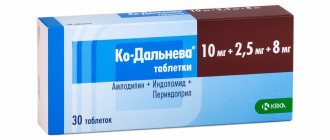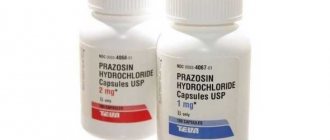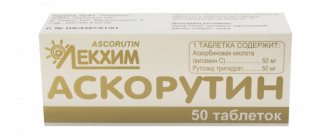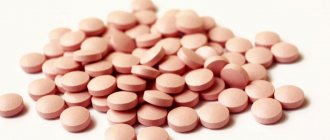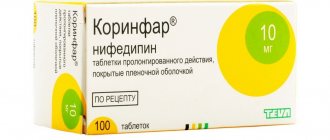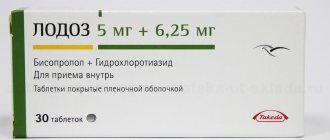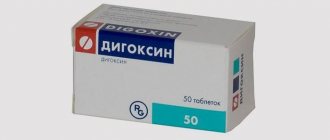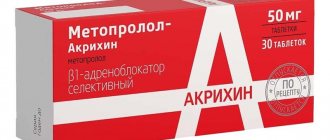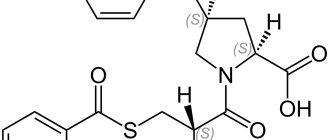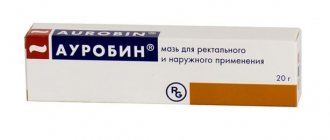The drug is used to treat problems with blood supply to the brain. Often, therapy with this medication is intended to treat people who have had a stroke or heart attack. Complex disorders in the brain can cause certain consequences.
Mexidol injection solution has various contraindications, but often the drug is prescribed to people with impaired blood supply to the brain and during the recovery period after a traumatic brain injury, stroke, heart attack and some other diseases. In this article we will take a detailed look at Mexidol injections: instructions for use, reviews, price, analogues.
Instructions for using Mexidol injections
The decision to prescribe a parenteral method of drug delivery is made by the doctor. Injections should be performed in a medical facility, subject to antiseptic rules, to prevent infection.
The instructions for using Mexidol injections describe in detail the conditions of use, since the choice of injection dosage and duration of therapy depend on the type of pathology.
Standard packaging contains 5-10 ampoules of 2 ml. The injections are given intramuscularly. Intravenous administration is permissible only in a hospital setting through a drip. Intravenous is acceptable , but, again, only under the supervision of a specialist. At home, the best option is to perform intramuscular injections in the buttock.
In each specific situation, the dosage, frequency and duration of use is determined by the doctor.
Independent use of Mexidol is permissible for preventive purposes to avoid anxiety disorders and decreased mental abilities. In this situation, the following rules are taken into account:
- The maximum dosage for intramuscular administration is 600 mg per day. It is better to start with 200 mg per day. If there is no result, the dose is increased over time. The ampoules of the drug contain different proportions of the active substance. The most common is Mexidol 5%. But, if you plan to use the maximum dosage, the best solution is to purchase ampoules of Mexidol 10%.
- The daily dosage is divided into 2 administrations: morning and evening. Injections are usually tolerated without complications. The administration of the drug does not cause pain or burning sensation. It is not for nothing that doctors prescribe the drug to children under 12 years of age, and in exceptional situations, to infants.
- The preventive course lasts 10-14 days. It is impossible to give injections for longer without the supervision of a doctor. If you want to enhance the effect, after this period it is better to switch to the tablet form. Again, this is acceptable as long as there are no adverse consequences.
Patients usually treat intramuscular administration of Mexidol with caution, because they think that it is better to administer intravenously. But experts say that there is no particular difference between intramuscular and intravenous administration. Note that the most pronounced result is obtained when performing injections together and taking Mexidol tablets.
Dosage and methods of application. Instructions for use
Mexidol injections are intended for jet or drip injection of a solution into a vein or through intramuscular injections. It is important to know how to properly inject Mexidol intravenously. Typically, an ampoule of the drug must be diluted in a special sodium chloride solution. Why do you need to dilute Mexidol with the solution? The answer is simple: to avoid side effects. How long the process of infusion of the drug takes depends on the method of injection. The procedure takes on average about 5 minutes. If droppers are used, the injection rate is 60 drops per minute. The maximum dose allowed for use during the day is 1.2 grams.
This method of injecting the drug "Mexidol" intramuscular injections is recommended only after careful study of the instructions for use, since the dosage is selected on a strictly individual basis for each specific case, depending on the stage of the disease.
"Mexidol" in the form of a solution - what does it help with and how to use it? Instructions
- in case of severe disturbances in the circulatory processes of the brain: 200 – 500 milligrams, first with the help of droppers, for a course of 10 days to 2 weeks, 4 times a day. Then the drug is administered intramuscularly in a course of 2 weeks, 1 - 2 times a day at a dosage of 200 - 250 milligrams. This comprehensive technique is most effective for achieving positive results throughout the entire treatment process;
- when eliminating the consequences of traumatic brain injuries: a course of 10 to 15 days at a dosage of 200 - 500 milligrams with the amount of administration from 2 to 4;
- in case of insufficient blood supply to the brain of a slowly progressive nature, the drug is injected into a vein for up to 2 weeks, 1 to 2 times a day. In this case, the dosage for each individual patient is individual - 200 - 250 milligrams. Further administration of the solution is supposed to be done by intramuscular injection in a course of up to 2 weeks, 100 - 250 milligrams per day;
- for disorders associated with the cognitive functions of the body, the drug is administered into the muscle for up to 1 month at a dosage of 100 – 300 milligrams per day;
- in case of myocardial infarction, a long complex course of treatment is provided, which involves administering the drug intravenously during the first five days, and then switching to injecting the drug into the muscle in a course also of 5 days. The dosage in both cases is 3 times a day with a time interval of 8 hours. The maximum dose allowed for use is limited to 9 milligrams per day per 1 kilogram of total body weight;
- for open-angle glaucoma, the intramuscular route of drug administration involves a course of up to 14 days at a dosage of 100–300 milligrams with a number of injections from 1 to 3;
- In case of alcohol poisoning, both injection options are possible. The course of therapeutic nature is 5 - 7 days at a dosage of 200 - 500 ml with a frequency of administration 2 - 3 times a day;
- in case of inflammation with the release of pus: this acute condition requires surgical intervention. Therefore, injections of Mexidol (Mexiprim) injections are prescribed both one day before the operation and after it in a dosage of 300 - 800 ml per day. Such a large interval in acceptable doses is explained by the severity of the condition in a particular admitted patient.
When prescribing a course of Mexidol injections, discontinuation of the drug is impossible. Treatment should be discontinued gradually by reducing the initial dosage.
Which pharmacies are best to buy from + price
Buying Mexidol is not difficult. Mexidol is sold in any city pharmacy, and is available for order in online pharmacies, such as:
- Classic;
- pills.ru;
- Zhivika;
- Rigla;
- Apteka.ru;
- My doctor;
- Eapteka.ru.
Below is the average price of Mexidol per package:
- Injections 2 ml, package No. 10 – 410-480 rubles.
- Injections 2 ml, package No. 50 – 1750-2000 rubles.
- Injections 5 ml, package No. 5 – 400-470 rubles.
- Injections 5 ml, package No. 20 – 1380-1530 rubles.
In what volume and how to give injections
There are intramuscular, intravenous and subcutaneous injections of the drug. The medicine is available in ampoules and is administered intramuscularly or by infusion. The method of administration of Mexidol is determined by the doctor. The solution is colorless and is sold in ampoules of 2 or 5 ml.
1 ml of the drug contains 50 mg of the active substance. Mexidol solution is injected when it is necessary to get results in a short period of time. In addition, the solution does not harm the stomach; the effect of the medicine is more pronounced and lasts longer than the effect of taking tablets.
Most often, doctors prescribe intramuscular injections of Mexidol to their patients . At home, it is best to inject into the thigh or buttock; these are the most painless places. Doctors can give injections in the deltoid muscle of the arm, but it is not recommended for patients without medical education to repeat this on their own.
Important: Instructions for use of Mexidol and price
The amount and how often the patient will need to be given the medicine depends on the disease and condition of the person. For example, during neurotic disorders Mexidol should be injected in a volume of 100 mg daily . For a stroke or traumatic brain injury, the course of treatment will be at least 2 weeks, several times a day, since it is necessary to improve blood supply to the brain. For the treatment of intellectual disability, elderly people inject Maxidol 100-300 mg once a day.
So that you don’t have any questions about how to inject this medicine intramuscularly, we will look at step-by-step instructions for performing injections:
- First of all, the ampoule with the medicine must be wiped with a cotton swab. Alcohol works great as a disinfectant. Open it.
- Draw Mexidol into the syringe. It is best if you do not touch the walls of the ampoule when taking the medicine.
- Clean the injection site with an alcohol wipe.
- Lift the syringe with the needle up. Make sure there is no air left in it by squeezing out a small amount of medicine.
- Confidently insert the needle into the soft tissue of the buttock at a right angle. It is important not to hesitate in taking these steps.
- Apply a little pressure to the syringe and begin administering the medication. To minimize pain, the medicine should be administered very slowly, over 5-7 minutes.
- Take out the needle and put cotton wool on the injection site. In order for the medicine to dissolve faster, the injection site should be massaged for a minute.
If a long course of using Mexidol is expected, then the injections are given alternately in different buttocks at a distance of several cm from each other.
Action of injections, reviews
The ability of Mexidol injections to influence a variety of diseases is associated with its antioxidant, nootropic, membrane-stabilizing, antihypoxic and anxiolytic properties. In addition to them, the medicine helps the body resist stress, improves memory, prevents seizures and affects the amount of certain lipids.
Action of injections
The active substance has the most pronounced antioxidant and membrane protector properties. Thanks to this, it suppresses oxidative reactions and the activity of free radicals. As a result:
- Increased superoxide dismutase activity.
- Increased lipid to protein ratio.
- Reducing the viscosity of cell membranes and increasing their fluidity.
Mexidol normalizes the functioning of membrane-bound enzymes , including acetylcholinesterase, adenylate cyclase and phosphodiesterase. Due to this and the effect on receptor complexes, the following occurs:
- improving the ability of complexes and enzymes to bind to ligands;
- normalization of the movement of neurotransmitters;
- supporting the healthy state of biological membranes;
- improving the transmission of neurotransmitters synapses.
The medicine helps the body better resist lack of oxygen, diseases and various aggressive factors. It fights symptoms of ischemia, shock, drug and alcohol poisoning. The effect of Mexidol injections causes an increase in the amount of dopamine, normalization of metabolic processes and cerebral circulation, improvement of the rheological parameters of the blood and its microcirculation.
Reviews from doctors
Below are reviews of Mexidol from doctors.
Zinchenko A.V. ENT, 9 years of experience: Mexidol is often used in ENT practice for the treatment of both acute and chronic sensorineural hearing loss in adults and children. The course of treatment consists of intravenous administration of the drug for 10 days. I am glad that the price in pharmacies corresponds to the quality of the medicine. Use strictly after consultation with an audiologist and the availability of a conclusion in the form of an audiogram.
Lisenkova O.A. neurologist, 13 years of experience: Well tolerated, used in combination with many other drugs. It has a weak anti-anxiety and sedative effect. Positively affects blood flow. It is used for many neurological diseases and conditions, for example, various encephalopathies, autonomic dystonia syndrome. Intramuscular, intravenous use and oral administration are acceptable.
Yakusheva A.E. narcologist, 16 years of experience: A good drug for various diseases: drug addiction, neurological, therapeutic, vascular, etc.. I didn’t find any cons. I use it in my practice in the treatment of hangover syndrome in combination with other drugs in injection form and subsequently prescribe Mexidol tablets as a course of treatment. I advise you to take the drug Mexidol as prescribed by your doctor! Do not self-medicate.
Reviews from people
Nikolai: Some kind of feeling of anxiety has been bothering me lately after failures in business. I was prescribed intramuscular injections of Mexidol. There were no side effects. It got a little better, but I can’t say that Mexidol really helped me. I will repeat the course of treatment with Mexidol and, probably, then Mexidol will help more. I think that if a doctor prescribes therapy, then you cannot refuse. Hoping for the best.
Regina: We were diagnosed with dystonia. Galidor was appointed. So it made me feel more dizzy. Replaced with Mexidol. Dizziness has decreased.
Natalya: My aunt took a course of Mexidol while recovering from a stroke. I was satisfied with the drug. Speech and memory functions normalized. No side effects.
Video
Below is a short video about the drug.
pharmachologic effect
Mexidol is a relatively new domestically produced neuropsychotropic drug. It has a unique mechanism of action, causing pharmacological effects at the neuronal and vascular levels.
The medicine has the following effects:
- antioxidant;
- antihypoxic;
- cell membrane stabilizing;
- cerebroprotective, nootropic;
- vegetotropic;
- anxiolytic;
- anti-alcohol;
- antiparkinsonian.
The advantage of Mexidol in terms of anxiolytic effect, compared to benzodiazepine tranquilizers, is the absence of pronounced sedative, muscle relaxant manifestations, and adverse reactions in the form of memory impairment.
In addition, thanks to Mexidol, the body's resistance to stress increases, memory improves, seizures are prevented, and lipid concentration in various tissues and organs decreases.
Pharmacodynamics
Ethylmethylhydroxypyridine succinate is an active substance that can prevent or slow down the oxidation of membrane lipids in cells. Its main properties are antioxidant and membrane protective. It inhibits the oxidation of biomembrane lipids under the influence of free radicals, promotes the activity of antioxidant enzymes, regulates lipid balance by increasing the amount of polar lipids, reducing the viscosity and fluidity of the membrane.
In addition, Mexidol is actively and successfully prescribed in the treatment of withdrawal symptoms and poisoning of the body with alcohol-containing drinks.
Pharmacokinetics
After intramuscular injection, the concentration of the substance in the blood plasma can be determined within four hours. Its maximum is observed in the period from 45 to 50 minutes.
Mexidol quickly enters organs and tissues from the blood and is just as quickly removed from there.
Processing of the active substance occurs in the liver. Various metabolic products are formed there, some of which have a certain activity.
The drug is eliminated by urination.
The medicine Mexidol belongs to the pharmacological group of drugs that affect the nervous system.
The drug is characterized by:
- antioxidant;
- antihypoxic;
- membrane stabilizing;
- nootropic;
- anxiolytic properties.
In addition, it has a pronounced stress-protective effect (that is, it increases the body’s resistance to stress), improves memory, has the ability to prevent or stop seizures, and also reduces the concentrations of certain lipid fractions (in particular, low-density lipoproteins) in various tissues and body fluids.
Indications
In this section we will tell you why Mexidol injections are prescribed.
The instructions for using Mexidol say that the injection solution is used in the treatment of open-angle glaucoma of various stages, in case of acute myocardial infarction (from the first day Mexidol is connected to a complex therapy regimen). For purulent-inflammatory processes of the abdominal organs, acute inflammation of the pancreas, necrotizing pancreatitis or peritonitis, injections are especially effective.
The following is a more detailed list of indications for the use of Mexidol injections:
- acute cerebrovascular accidents;
- traumatic brain injury, consequences of traumatic brain injury;
- encephalopathy;
- autonomic dystonia syndrome;
- mild cognitive disorders of atherosclerotic origin;
- anxiety disorders in neurotic and neurosis-like conditions;
- acute myocardial infarction (from the first day) as part of complex therapy;
- primary open-angle glaucoma of various stages, as part of complex therapy;
- relief of withdrawal syndrome in alcoholism with a predominance of neurosis-like and vegetative-vascular disorders;
- acute intoxication with antipsychotic drugs;
- acute purulent-inflammatory processes of the abdominal cavity (acute necrotizing pancreatitis, peritonitis) as part of complex therapy.
Mexidol's analogs
The drug Mexidol, like any medicine, has analogues that belong to two groups:
- Similar in composition and principle of influence.
- According to the same principle of influence on the body, but according to a different chemical composition.
The drugs of the first group include drugs containing the active substance ethylmethylhydroxypyridine succinate, the same as Mexidol:
- Mexico;
- Mexiprim;
- Astrox;
- Neurox;
- Cerecard;
- Medomexy.
All these drugs for intramuscular and intravenous injection are considered the best to replace Mexidol. Analogues of Mexidol also include the drugs Actovegin, Nootropil, Cortexin, Caviton, Mildronate, which have a different composition, and are considered identical in terms of the degree of impact for some diseases. Brief characteristics of analogues having different compositions:
- One of the most popular analogues is Actovegin (the active substance is a deproteinized hemoderivative of calf blood), which is used for diseases:
- diabetic polyneuropathy (complications of diabetes);
- disorders in brain tissue metabolism;
- disorders of peripheral blood vessels.
- Nootropil (active ingredient piracetam) is prescribed after a stroke in complex therapy.
- Kaviton (the active substance vinpocetine) is used for vascular diseases of the brain.
- Cortexin (active substance complex of water-soluble polypeptide fractions of the cerebral cortex of livestock) indications for use in cases of cerebrovascular accident, head injury, cognitive disorders as part of complex therapy.
- Mildronate (active ingredient meldonium dihydrate) is prescribed as part of complex treatment for cardiovascular diseases, cerebral blood supply disorders as a result of stroke, and chronic alcoholism.
Contraindications
Like any medicine, Mexidol has a number of contraindications for use. It is categorically not recommended for some acute diseases, in particular for renal or liver failure.
Another obstacle to getting acquainted with Mexidol is individual intolerance either to the drug as a whole or to its individual components. It is not prescribed to expectant mothers and children, since the effect of the drug on pregnancy or the child’s body has not yet been well studied. These contraindications for Mexidol are standard.
Side effects
Before prescribing a medicine, the doctor studies its description, excludes contraindications, side effects, and incompatibility with other pharmacological groups as part of complex treatment. This eliminates the deterioration of the patient’s general well-being, which speeds up recovery.
After prescribing the drug, keep in mind that Mexidol has the following side effects:
- signs of dyspepsia of varying severity;
- local allergic reactions.
Analogs
Ethylmethylhydroxypyridine succinate, in addition to the name Mexidol, is found in pharmacies under a number of commercial names:
- Mexican.
- Mexibel.
- Mexicofin.
- Mexidant.
In terms of their chemical structure, these Mexidol analogues are absolutely identical drugs, which, in addition to their composition, are identical in both release forms and dosages. The only difference is the pathologies for which each of them is predominantly prescribed. But there is no substantiated confirmation of such a distribution.
As for other drugs with similar pharmacological effects, here in pharmacies you most often find:
- Neurox – from 357 rub. The drug is for intravenous and intramuscular injection. The active ingredient is ethylmethylhydroxypyridine succinate. The action of Neurox is similar to Mexidol.
- Cerecard – from 126 rub. Antioxidant drug based on ethylmethylhydroxypyridine succinate. The mechanism of action is similar to Mexidol.
- Hypoxen – from 351 rub. The active ingredient is sodium hypoxene polydihydroxyphenylene thiosulfonate. The drug has antihypoxic, antioxidant, metabolic, hypotensive and vasodilating effects on the body. Effective for stimulating tissue respiration during hypoxia.
- Riluzole – from 5000 rub. The drug is used for amyotrophic lateral sclerosis. Allows therapy to be carried out without the use of artificial ventilation and tracheostomy. The action of Riluzole is to block sodium channels, which, when active, provoke the death of neurons.
- Vitagamma – from 130 rub. A medicine intended to replenish sufficient vitamin balance in the body. Prescribed for neurological pathologies caused by vitamin deficiency, and as an element of complex therapy for neuritis, polyneuritis, neuralgia, polyneuropathy.
- Emoxibel – from 89 rub. A drug for the treatment of acute and chronic cerebral circulatory disorders of an ischemic or hemorrhagic nature. The action of Emoxibel is aimed at reducing the permeability of blood vessels and capillaries, reducing blood viscosity, and dilating coronary vessels.
When is the best time to inject Mexidol?
The injection form of the drug is available in the form of a concentrated solution in ampoules. 1 ml of medicine contains 50 mg of the active substance (ethylmethylhydroxypyridine succinate). There are no universal instructions for use. In each individual clinical case, an individual treatment regimen and course duration are selected:
- for mild autonomic disorders, an injection of Mexidol is given intramuscularly at a dosage of 50-100 mg per day for 2-4 weeks;
- severe conditions associated with cerebral circulatory dysfunction require drip or jet administration of the drug in an amount of 200-500 mg 2-4 times a day
Most experts agree that Mexidol should be injected in the morning, that is, in the first half of the day . There is good reason for this recommendation. The drug has a tonic effect, it invigorates and activates the cardiovascular system. If you take the injection before bed, it will be difficult to fall asleep. Therefore, for a one-time use, it is advisable to give the injection in the morning. If the treatment regimen involves dividing it into several doses, then the evening procedure should be carried out several hours before bedtime.
Mexidol is used exclusively as prescribed by a doctor, so the nuances of the timing of the injection are discussed individually.
